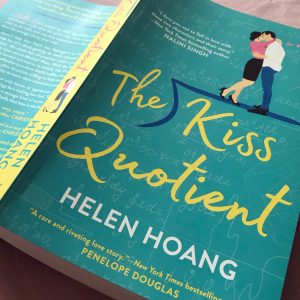
Like many romance novels, this book has two protagonists. That means there are two complete sets of story structure checkpoints woven together.
First, here’s a quick summary:
Stella Lane is a smart woman. She loves numbers, statistics, and algorithms. She has very little dating or sexual experience because, frankly, she doesn’t find it that appealing. Plus, she considers her Asperger’s to be a deal-breaker for most men.
However, she finally decides to do something about her inexperience. She figures all she needs is practice, and lots of it, with a professional. Enter Michael Phan, male escort.
He can’t afford to turn down her proposition and agrees to tutor her. It will surprise no one that their professional arrangement soon gets muddled with emotions and they must both reevaluate what they thought they were looking for.
So, our two protagonists are Stella and Michael.

Stella
Stella’s flaw is lack of self-confidence. She also doesn’t believe she can be loved for who she is (which represents a secondary flaw of lack of self-worth).

Michael
Michael’s flaw is lack of self-worth. He doesn’t believe he’s good enough for anyone, but especially a successful career woman like Stella.
As a quick side note, I’d call Michael the “Primary Romantic Lead” in this book because, while Stella does overcome her flaw and change, the book is a little bit *more* about him. His story structure checkpoints dominate the narrative. That isn’t unusual in this genre. Many heterosexual romances (especially in the 80s and 90s) are more about the man changing than the woman. I think this trend is becoming less common over time since, frankly, it is a bit sexist.
Now, back to structure!
Here are Stella’s Nine Story Structure Checkpoints:
Act 1
Hook: She reveals she prefers working on Saturdays to dating.
Backstory: Stella has LOTS of money and is insecure about her social skills because she’s on the autism spectrum. She’s afraid she’s bad at sex.
Trigger: Michael (a male escort she’s hired) refuses her proposal that he tutor her and give her lessons according to a curriculum she’s worked out.
Act 2
Crisis: Stella assumes his refusal is because she’s SO BAD at sex and her lack of self-confidence overwhelms her.
Struggle: He reconsiders, and throughout their relationship, she ends up meeting his family, which throws off her routines. He ultimately breaks up with her and she tries to change herself into the kind of woman she thinks he wants.
Epiphany: She realizes she’s not broken and she doesn’t need to change herself for Michael.
Act 3
Plan: She decides she will find someone who loves her for who she is and is not a charity case.
Climax: Michael confesses he was wrong and that he truly loves her for who she is.
Ending: They live happily ever after.
And here are Michael’s Checkpoints:
Act 1
Hook: Michael is a reluctant escort. He doesn’t do it because he wants to but because he desperately needs the money.
Backstory: His dad is a terrible person and Michael has bills piling up.
Trigger: He can’t afford to turn down Stella’s offer to be her “practice boyfriend.”
Act 2
Crisis: Michael is terrified he’s turning into his scumbag, womanizer father.
Struggle: Michael realizes he’s falling in love with Stella even as he struggles with his family, bills, and lack of self-worth.
Epiphany: He realizes he is NOT his father and he has worth as a person.
Act 3
Plan: Michael takes steps to pursue his dream career and Stella (because he finally believes she really loves him).
Climax: He convinces Stella he loves her for who she is and is ready to be her real boyfriend.
Ending: They live happily ever after.
So, why do I say Michael is the primary romantic lead? It’s because his actions drive the majority of the plot in Act 2 and Act 3. Stella’s actions do, however, drive the plot of Act 1.
In terms of story (emotional journey), it’s fairly well balanced. Both lovers have fully realized arcs and change over the course of the story. The book ultimately succeeds because of its interesting, dynamic, and sympathetic protagonists.
Are you surprised how little detail I included in these sets of story structure checkpoints? It’s because this is all you need to include to get started. The nine story structure checkpoints are the 10,000-foot view of a manuscript. They make sure:
- The flaw is present
- The flaw is attacked by the events of the Trigger
- Stuff happens in the struggle that attacks the flaw
- The protagonist overcomes the flaw in the Epiphany
- In Act 3, the protagonist does something they could NOT have done before the Epiphany
The exact details of all the scenes that contain these events are things you can figure out as you outline (or write, you pantsers in the audience!).
